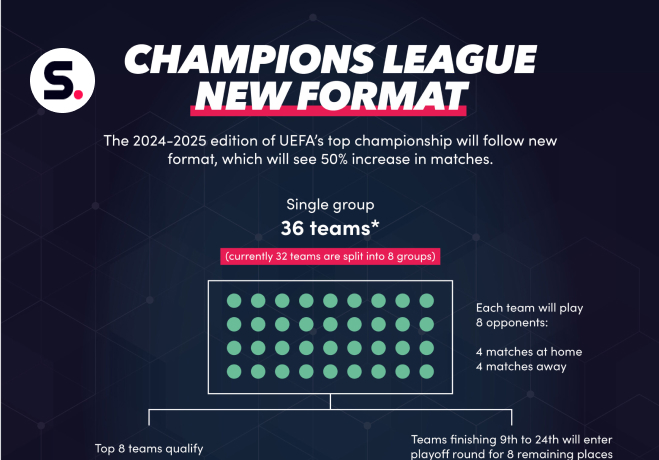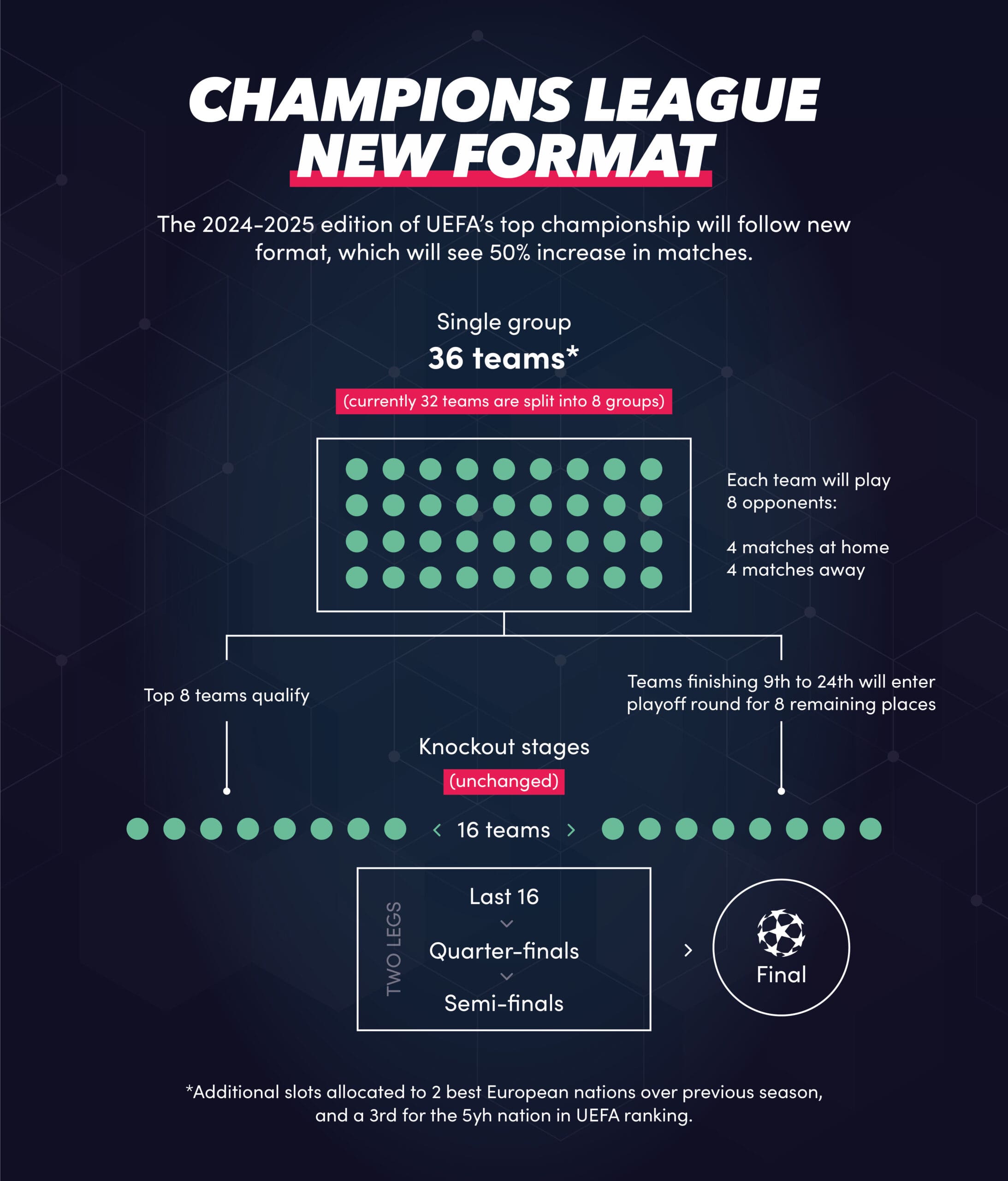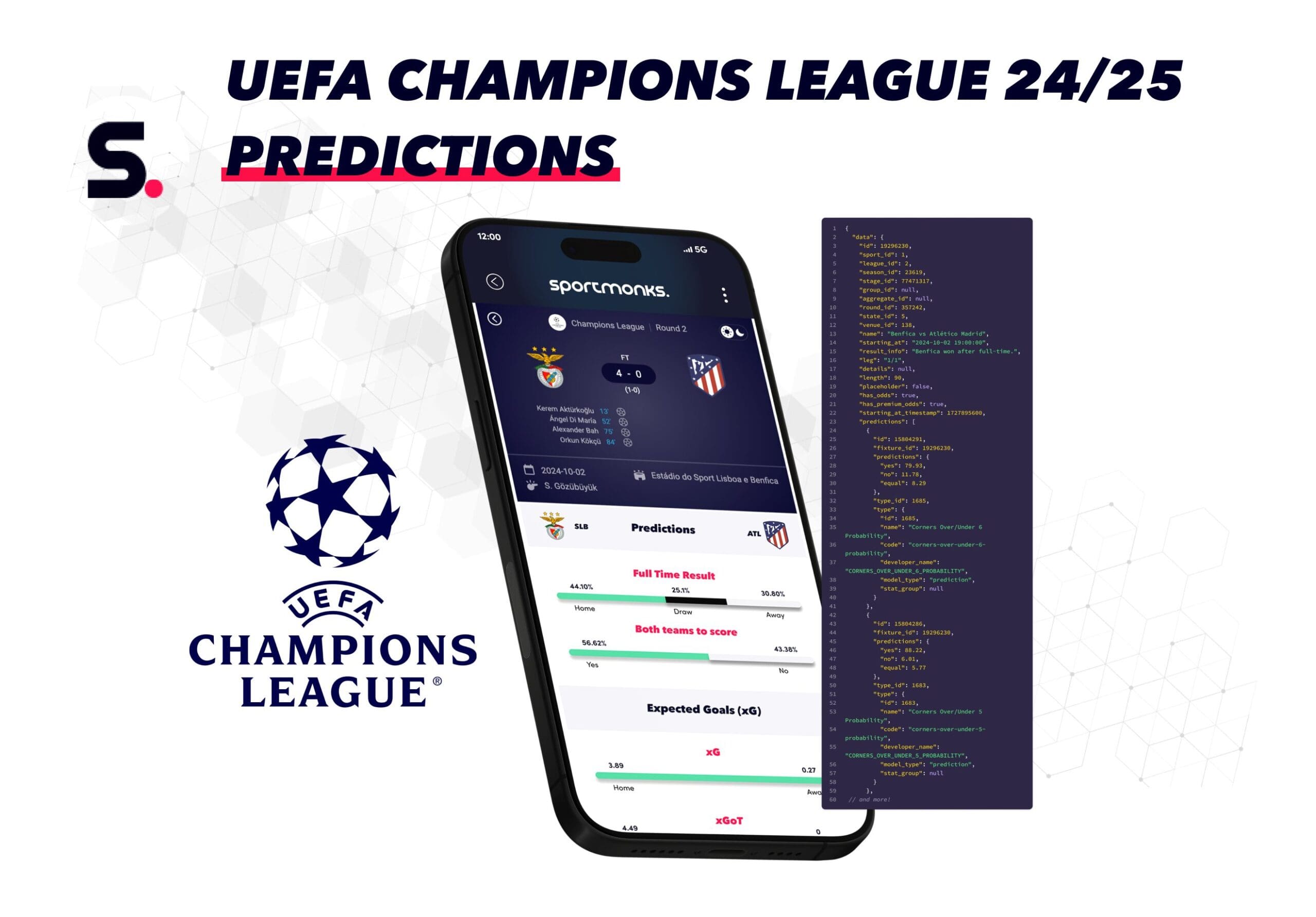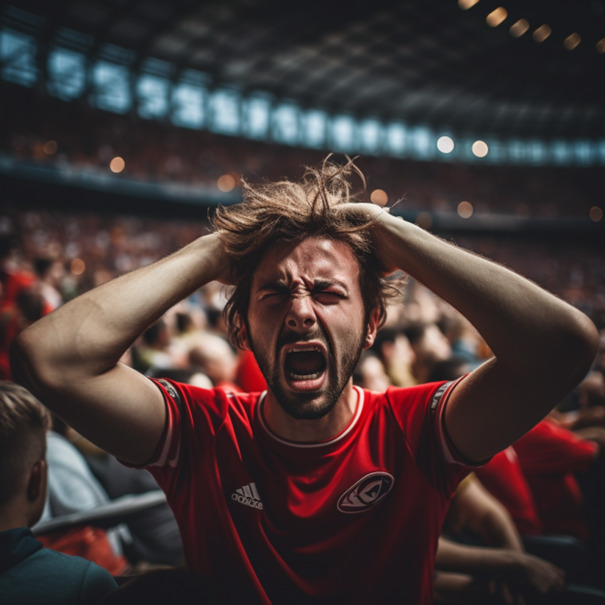
Contents
The UEFA Champions League as we know it
As we know, the UEFA Champions League will undergo some significant changes. There won’t be a poule A-H anymore, and there won’t be 32 teams playing; instead, it will expand to 36, and we will have one big ranking with every team on the same list. When will these changes happen? This new format will start in the 2024/2025 season.
What is the new Champions League format?
The new Champions League format will be different. As mentioned above, we will have 36 teams, and all the teams will participate in the same rankings list. That does not mean that everyone plays each other like the regular competitions mainly do.
There will be 36 teams participating, opening up more opportunities for clubs from smaller leagues to participate in the competition. This is important to promote inclusivity and diversity.
Instead of the traditional group stage format, the new Champions League will feature a ‘Swiss model’ format. Under this system, the 36 participating teams will be placed into one league table, where each team plays eight matches against eight different opponents, four home and four away. Home and away versus the same opponents will not happen during the group stage. One important aspect is that the final two rounds of this group stage will take place after the winter break.
The idea behind this new format, including the league list, is that there will be more top-level matches earlier in the season. For example, Real Madrid—Manchester City, or FC Barcelona—FC Bayern Munich. The bigger clubs will play each other more often this way. At least, that is the idea. This is more interesting for fans and clubs.Besides that, every match counts as you compete against 36 teams!
Alright, there will be more teams participating and a new ranking system. Now what? After every team has played eight matches, eight teams will proceed directly to the knockout stage. The teams ranked 9th to 24th will be playing an extra round. Half of these teams will proceed to the knockout stages, and the other half will be eliminated. This means 16 teams will battle each other in the knockout stages. Teams ranked 25th to 36th are out of the tournament and will not proceed to the Europa League.
The UEFA said the following: “In the knockout phase, the teams which finished between 9th and 16th will be seeded in the knockout phase play-off draw, meaning they will face a team placed 17th to 24th – with, in principle, the return leg at home. The eight clubs which prevail in the knockout phase play-offs will then progress to the round of 16, where they will each face one of the top-eight finishers, who will be seeded in the round of 16. To strengthen the synergy between the league and knockout phases and to provide more sporting incentives during the league phase, the pairings of the knockout phase will also be partly determined by the league phase rankings, with a draw which likewise determines and lays out the route for teams to reach the final”. EUFA (2024)
The round of 16 and later in the knockout phase will follow the same format as the current format.
More teams, more (top-level) matches.

Why the new Champions League format?
The new Champions League format benefits clubs, fans, and UEFA. By providing more opportunities for clubs from smaller leagues to participate, the tournament becomes more inclusive and representative of European football. The Swiss model group stage also introduces a dynamic and competitive element, where every match matters, regardless of the club’s reputation or previous performance.
From a commercial standpoint, the expanded format opens up new revenue streams, including broadcasting rights and sponsorship deals. With more matches and increased global interest, the UEFA Champions League solidifies its position as one of the most lucrative sporting properties in the world.
According to Aleksander Čeferin said the following:“UEFA has clearly shown that we are fully committed to respecting the fundamental values of sport and to defending the key principle of open competitions, with qualification based on sporting merit, fully in line with the values and solidarity-based European sports model” I am really pleased that it was a unanimous decision of the UEFA Executive Committee, with the European Club Association, European Leagues and national associations all agreeing with the proposal. Another proof that European football is more united than ever.” UEFA (2024).
According to the UEFA, the new format will involve more European teams in each competition, so there will be more top-level matches for fans and a chance of more teams from their own country in the big European Tournaments. The competitive balance between all teams will improve as all teams play opponents of a similar competitive level throughout the league stage, and every game counts to proceed to the knockout stage.
How will teams qualify for the Champions League?
Qualification for the Champions League will persist in its current form, contingent upon a club’s final standing in the preceding season’s domestic league competition and the association’s position in the association club coefficient ranking. The framework of the access list will remain unchanged from the ongoing season, with an additional allocation of four slots for the 2024/25 season, distributed as follows:
Slot one: Reserved for the club securing the third position in the association championship and placed fifth in the access list, determined by the UEFA Association Club coefficient ranking.
Slot two: Designated for a domestic champion, expanding the number of clubs qualifying through the Champions path of the qualifying process from four to five. This path will encompass four qualifying rounds.
Slots three and four: Awarded to associations demonstrating their clubs’ most outstanding collective performance in the previous season. This assessment is based on the association club coefficient from the prior season, derived by dividing the total number of club coëfficient points earned by each club from an association by the number of participating clubs from that association. These two associations will each secure one automatic berth in the league phase (‘European Performance Spot’) for the club ranked as the next-best in their respective domestic leagues, following those clubs already directly qualified for the league stage.
What are the Champions League seeding pots?
The Champions League pots are highly important. They decide who plays whom in the group stage. The teams that each club will face will be drawn from four seeded pots, determined by their UEFA Coëficients. Two opponents will be drawn from each pot, resulting in one home game and one away game against teams from each pot.
What happens to the UEFA Europa League and Conference League format?
Next season, the UEFA Europa League, Europe’s second-tier club competition, will adopt the same revamped format as the Champions League. Additionally, the Europa Conference League will rebrand as the UEFA Conference League. Teams in this league will engage in six matches against six distinct opponents during the league phase. Both European competitions will feature 36 teams.
Are you excited to watch the European matches in the new format?
When does the new Champions League format start?
The new format will be implemented in the 2024-2025 season. This means we have all seen the last group stage with the current format at the time of writing (21st of May 2024). So, a completely new Champions League format and feeling will be operative next season.




